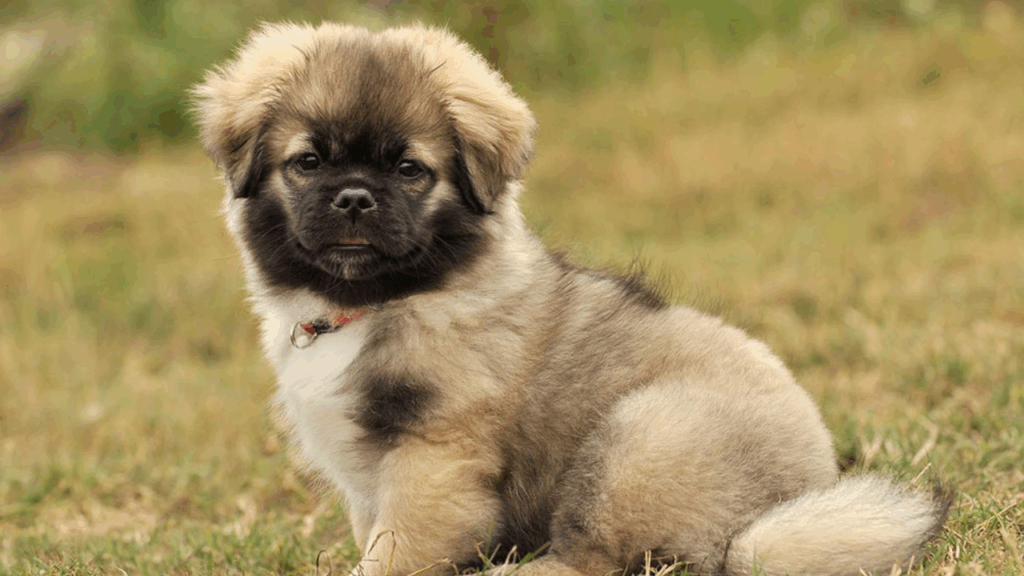The Tibetan Spaniel, affectionately known as the “Tibbie,” is a small, alert, and intelligent companion breed that hails from the monasteries of Tibet. Revered for centuries by Tibetan monks, this ancient breed is not a typical spaniel by function but is more closely aligned with companion dogs and sentinel breeds. With its expressive face, lion-like mane, and confident demeanor, the Tibetan Spaniel continues to capture hearts around the world as both a loving family pet and a vigilant watchdog.
Ancient Origins
The Tibetan Spaniel’s history stretches back over 2,000 years. Bred and kept in Buddhist monasteries throughout Tibet, these dogs were considered sacred and held in high regard. Unlike Western spaniels that were bred for hunting, Tibetan Spaniels served as watchdogs, companions, and even prayer wheel turners, sitting beside monks during meditation or perched on high walls to watch for intruders.
They were often gifted to foreign dignitaries, symbolizing goodwill and spirituality. Tibetan Spaniels are closely related to other ancient Tibetan breeds like the Lhasa Apso and Pekingese, sharing similar origins and purposes.
Appearance and Physical Traits
Tibetan Spaniels are small but sturdy dogs, well-balanced and graceful, with features that reflect their noble heritage and practical function.
Key characteristics:
- Height: 9–10 inches at the shoulder
- Weight: 9–15 pounds
- Coat: Silky, medium-length double coat; longer around the neck, ears, and tail
- Color: Comes in all colors and combinations—gold, black, cream, white, red, sable, and more
- Tail: Feathered and curls over the back
- Head: Slightly domed with a short, blunt muzzle and expressive, dark, oval eyes
The breed’s lion-like mane and cat-like agility contribute to its distinctive and charming look.
Temperament and Personality
Tibetan Spaniels are known for their intelligence, independence, and deep affection for their families. Despite their small size, they have big personalities and a strong sense of self.
Notable traits include:
- Alert and observant: Naturally suspicious of strangers, making excellent watchdogs
- Affectionate and loyal: Form strong bonds with their human companions
- Independent-minded: Can be stubborn at times, but not in an unfriendly way
- Playful and curious: Enjoy toys, games, and exploring their surroundings
Tibbies are not overly clingy, but they do thrive on companionship and may become lonely or unhappy if left alone for long periods. They prefer to be close to their people, often choosing high vantage points (like the back of a couch) to observe their surroundings.
Exercise and Training
Tibetan Spaniels are not high-energy dogs, but they do require regular exercise and mental stimulation to stay happy and healthy.
Exercise needs:
- Daily walks and active play sessions
- Safe indoor or fenced outdoor spaces to explore
- Puzzle toys and training games to engage their sharp minds
Training a Tibetan Spaniel requires patience and positive reinforcement. They are smart and capable learners but can also be independent and sometimes willful. Harsh discipline doesn’t work well with this sensitive breed. Early socialization and puppy classes are recommended to help them become confident and well-adjusted adults.
Grooming and Care
Tibetan Spaniels have a moderate grooming requirement due to their beautiful double coat.
Grooming routine:
- Brushing 2–3 times a week to prevent tangles and reduce shedding
- Bathing as needed (every few weeks or when dirty)
- Regular ear cleaning, nail trimming, and dental care
Their coat doesn’t require trimming, and they tend to keep themselves fairly clean. During seasonal shedding (typically in spring and fall), more frequent brushing will help manage loose hair.
Health and Lifespan
The Tibetan Spaniel is generally a robust and healthy breed, with a lifespan of 12–15 years or more when well cared for.
Common health considerations include:
- Progressive Retinal Atrophy (PRA) – an inherited eye condition
- Patellar Luxation – kneecap dislocation
- Respiratory issues – due to their short muzzle (though not as extreme as brachycephalic breeds)
Reputable breeders conduct health screenings to reduce the risk of genetic conditions. Regular vet check-ups, a balanced diet, and routine care contribute to a long, happy life.
Ideal Home and Environment
Tibetan Spaniels are highly adaptable and can thrive in many living situations, including apartments and houses with or without yards. They do best in homes where they receive plenty of attention, companionship, and a safe space to explore.
They get along well with:
- Older children who understand gentle handling
- Other dogs and even cats, especially if raised together
Due to their watchdog nature, they may bark at unfamiliar sounds or visitors, but they are not excessive barkers when properly trained.
Conclusion
The Tibetan Spaniel is a delightful blend of ancient wisdom and modern charm. With its soulful eyes, loyal heart, and dignified yet playful nature, the Tibbie makes a wonderful companion for individuals, couples, or families who appreciate a small dog with a big personality.
This little lion-hearted sentinel of the Himalayas continues to enrich lives far beyond its native land, offering love, laughter, and loyalty wherever it goes.

Andy Parker is a dog lover, writer, and senior editor at BarkPicks. With years of experience covering canine health, training, and gear, he helps pet parents make smarter choices for happier, healthier dogs. Andy shares his home (and heart) with two rescue pups, Charlie and Mia.



